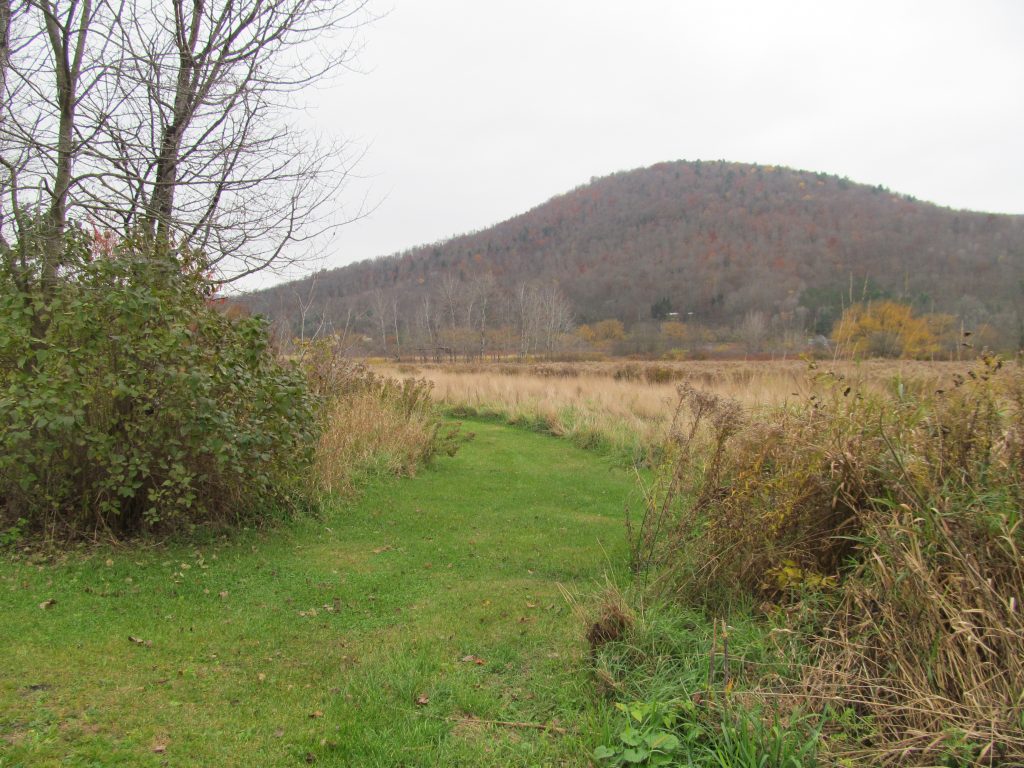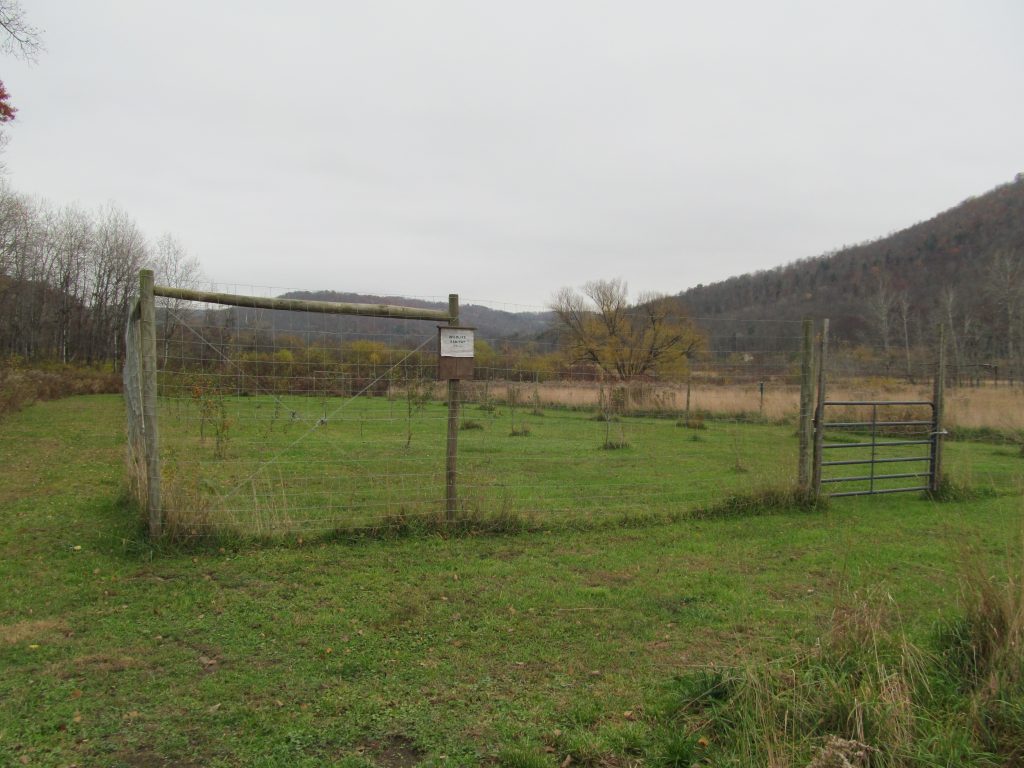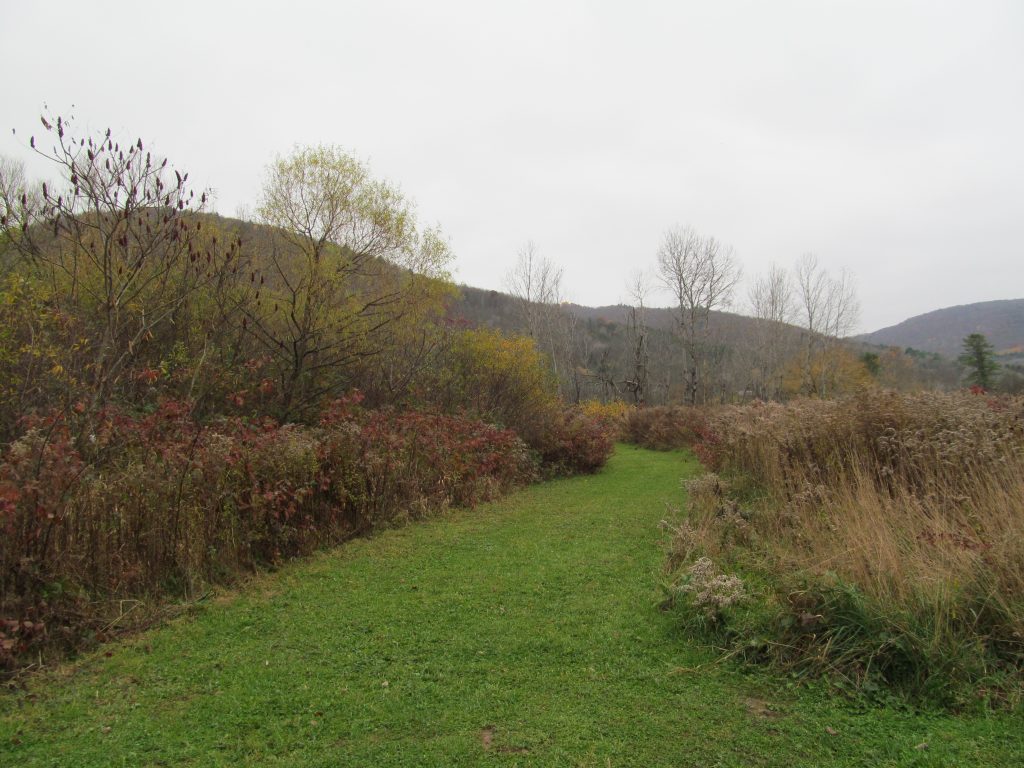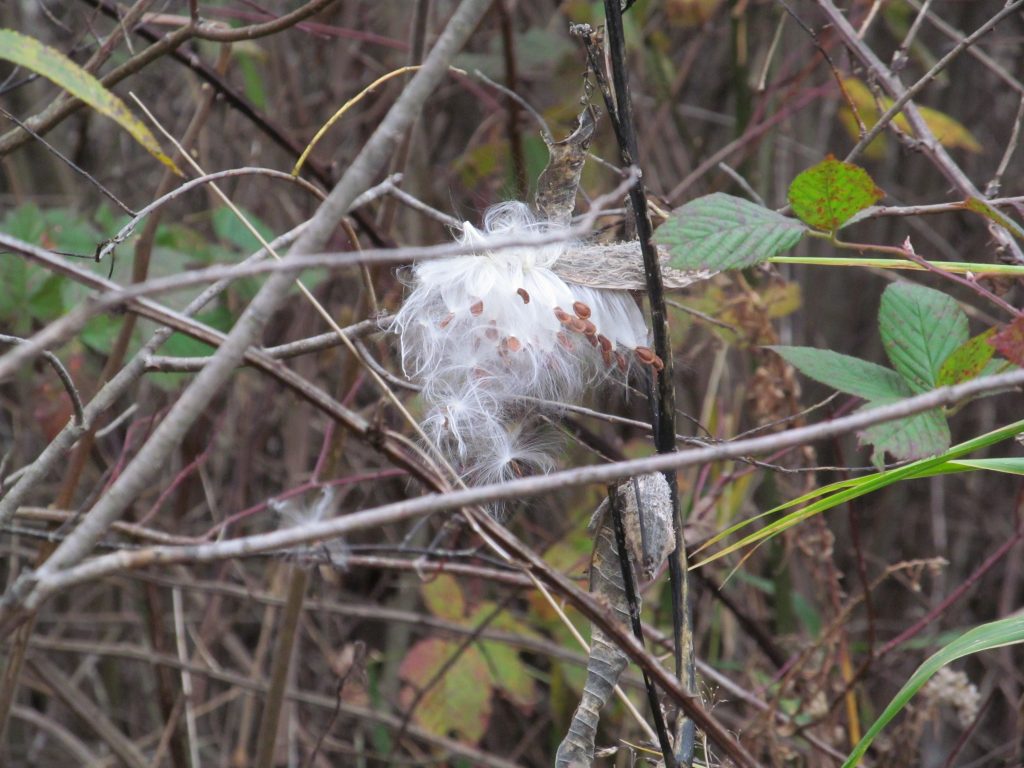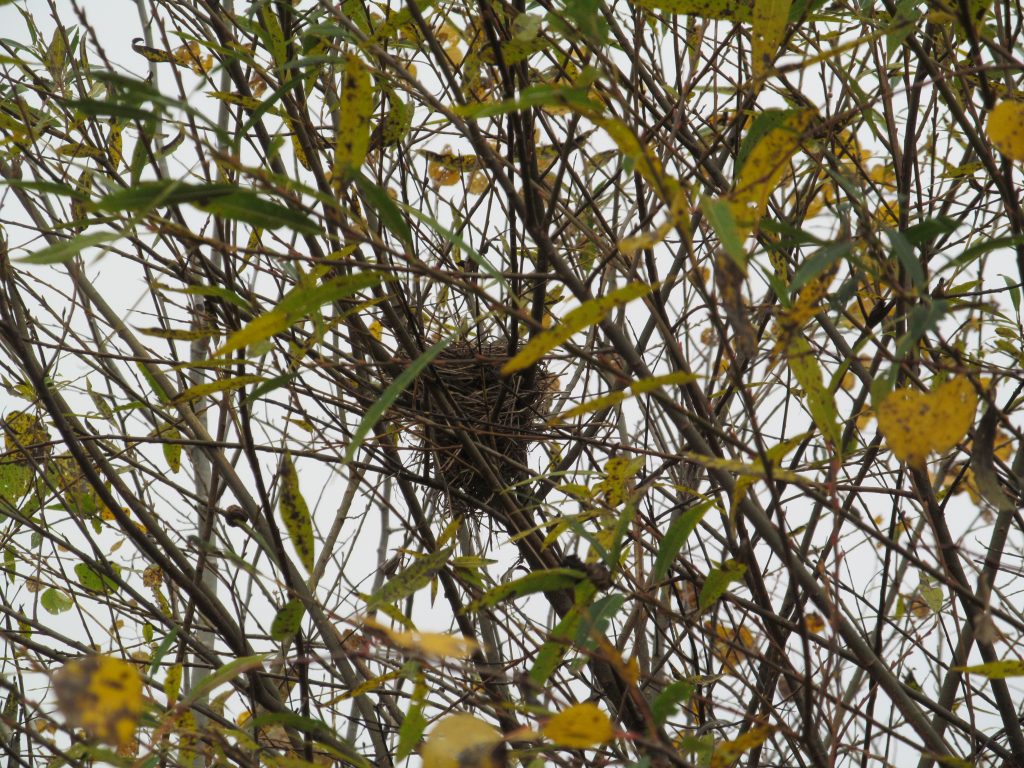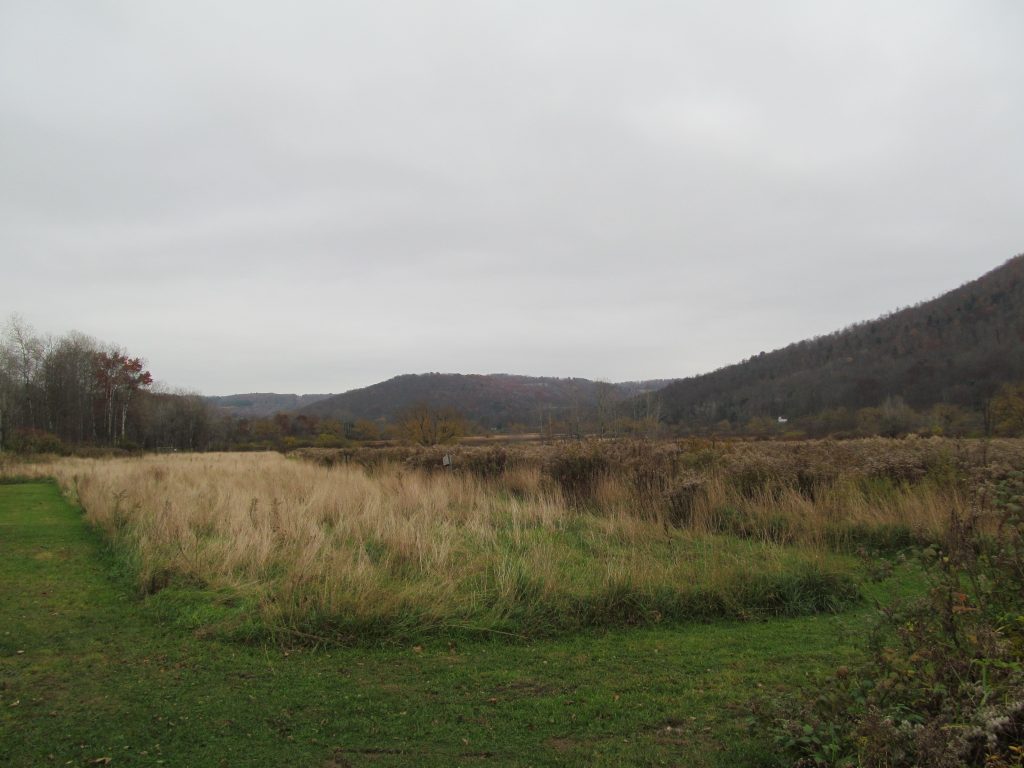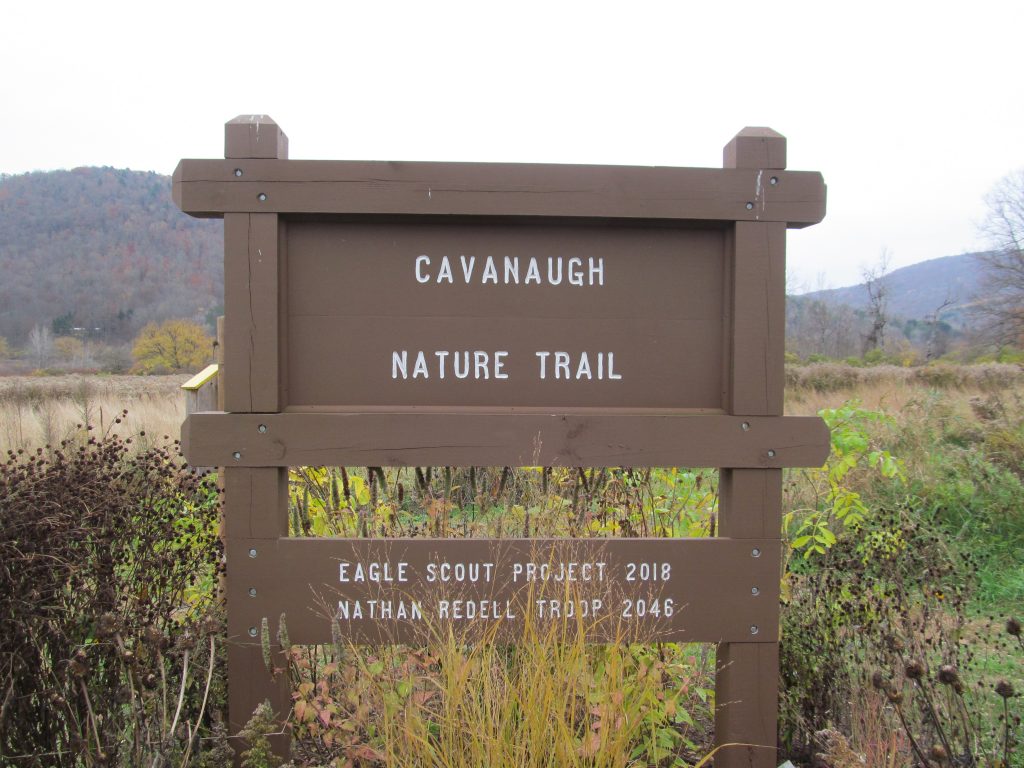By Renee Carey, August 9, 2017

Project Summary:
The Pine Creek Rail Trail currently runs 62 miles from Wellsboro Junction in Tioga County to Jersey Shore in Lycoming County. The Trail is on the rail bed that once hauled celery, lumber, and ginseng from the region to markets throughout the world. The Trail is popular with tourists, Boy Scout Troops earning bicycling badges, and local residents staying healthy by biking and walking.
While the Trail is a wonderful way to spend part of your day, people have identified a need at the northern end of the Trail. People have said they’d like to have a place to sit and watch wildlife, as well as just take a break to enjoy the day. In this stretch the Trail runs along Marsh Creek and a large wetland complex. The Trail is bordered on both sides by private land with the Bureau of Forestry in charge of maintaining the Trail.
In October 2016 there was an opportunity to purchase 132 acres along this stretch of the Trail. The property was being sold at a court ordered auction. When the Tioga State Forest staff saw the auction sign they quickly called their central office in Harrisburg to see if there would be some way to buy this property.
Staff from Forestry’s central office called NPC’s office. There isn’t a way for the state to attend an auction and buy properties. The rules, systems, and laws in place require various state offices and state departments to review sales contracts for real estate. As you can imagine it takes time for these multiple reviews to take place.
NPC talked to the staff from Harrisburg on a Monday. The auction was set for a Thursday. NPC had 72 hours (almost to the minute) to figure out if the property had conservation value and if NPC could buy it.
The property has multiple conservation values. The NPC board approved staff attending the auction and bidding. NPC was the high bidder.

Other partners include:
Bear Meadows Lodge
Tiadaghton Audubon Society
Pine Creek Headwaters Protection Group
Waste Management
Northern Tier Solid Waste Authority
Conservation Values
The property’s ecological features include wetlands along Marsh Creek. The wetlands are extensive, fed by Canada Run, and close to wooded areas. This allows wildlife to use the wetlands and Creek by moving from the forest to the stream and wetlands and back.
Tiadaghton Audubon Society’s members have been spending time tracking the bird species on the property. During a club wide event on a Saturday morning, they counted 47 species of birds.
Marsh Creek is a major tributary to Pine Creek. Marsh Creek meanders and bends through this property for nearly one mile. This Creek and its associated wetlands are a huge sponge that provide water year round that helps keep Pine Creek’s water cooler in the summer.
The property’s location is part of its recreational attributes. Because it’s almost exactly halfway between the Stokesdale access near Pag-Omar Farm Market and the Ansonia Access near where Marsh Creek enters Pine Creek, the Bureau of Forestry plans to create a parking area and access to the Pine Creek Rail Trail at the Cavanaugh Access property. A few benches will be added to the property to allow bikers, hikers, walkers and wanderers a place to sit rest, and enjoy the day. Forestry will eventually create a walking trail to allow people to see more of the wetlands, and hopefully see more wildlife.

Why “Cavanaugh” Access?
Earl Patrick Cavanaugh (“Pat’”) and Elsie Belle Colony Cavanaugh bought the property in 1939 from the George Adamy Estate and lived there for many years.
At the time they bought the property Pat worked on the crew of a pusher engine for the railroad. The crew worked a steam engine and would often wait on the siding at Tiadaghton for heavy freight trains or slow moving trains to come through. As the freight train passed the Tiadaghton siding, the pusher engine would attach to the back of the freight train and use the power of the pusher engine to help push the freight train up the grade.
Dr. George Durrwachter explained that pusher engines helped trains for many reasons. Dr. Durrwachter grew up along Pine Creek and the railroad at the village of Cammal. Cammal had a side track to allow one train to pull off so another could pass. The problem was once a train pulled off and stopped it was hard to get it moving again. The pusher crews would help these trains get moving again.
Dr. Durrwachter also remembers watching steam engines work to get started again after stopping at a water tower to refill. As the name implies, steam engines needed steam and used water to create that steam. Water towers were scattered along the rail line so the engines could refill. This meant the pusher engines were needed throughout the rail line to help the heavier trains start moving again after they refilled at the water tower.
“The Cavanaugh Tract’s acquisition is a shining example of how conservancies complement the goals and work of DCNR. After learning this acreage was headed toward auction, and with our Bureau of Forestry urging, this land promptly was purchased by the Northcentral Pennsylvania Conservancy and soon will become part of the Tioga State Forest.
And what a tract is it! Rich in farming and railroad history, the acreage is comprised of woodlands, reverting farmland and wetlands, offering trail-users a welcoming place to rest. Wildlife watchers and birders, especially, are likely to return to this area again and again.”
Cindy Adams Dunn, Pennsylvania Secretary of Conservation and Natural Resources
While we now walk and bike on the rail line for recreation the railroad had gentlemen whose job it was to walk specific sections of the track each day. These trackwalkers would do minor maintenance themselves, identify larger maintenance needs for the crews to undertake, and work to keep the track clear of rock slides and snow.
The Cavanaugh’s were involved in this aspect of the railroad’s operation too. Pat was named after his father, Patrick Josephus Cavanaugh, known as PJ. PJ was a track walker for the railroad. His section of the line was from Marsh Creek down to Tiadaghton. He walked down and back everyday to ensure the railroad’s trains could travel safely.
Pat Cavanaugh doesn’t just help us honor the region’s rail history, Pat also farmed during this time and helps us understand the region’s farming past. He became a full-time farmer when diesel began to replace steam and the pusher engines were phased out. Pat’s nephew, Grant, remembers a dairy at the property as well as Pat raising hunting dogs.
Farming wasn’t new to Pat. He and his brothers worked on the Adamy and Webster celery farms as kids.
Celery and lettuce was grown along Marsh Creek for decades. In 1901 four families owning land along the Creek entered into a legal agreement pledging to each other to keep the land properly drained and cared for to allow the celery and lettuce farming to continue.
Celery farming was a 9 to 10 month process. In mid-January seeds were planted and kept in “nurseries.” These greenhouses were built out of glass and set directly on the ground. One woman whose father was a celery farmer explained she used a salt shaker to plant the seeds in the greenhouses. She then would go back through with a watering can to set the seeds.
The farmers used steam boilers and woodstoves to keep the greenhouses warm. The fires had to be tended around the clock to keep the seedlings warm. Pat’s older brother worked as a “fire man” on the Webster’s farm beginning at age 13. The knowledge and experience he gained with the steam boiler on the farm helped him gain employment with the New York Central Rail Road. This greenhouse experience also helped Pat and his work with the pusher engines.
In April or May the seedlings were moved from the greenhouses to the fields in the wetlands, the Muck. The horse would be outfitted with “muck shoes” before cultivating the field. On some farms the “muck shoes” were blocks of wood strapped to the horse’s feet on other farms it was steel lid covers. The idea was to make a larger surface to distribute the horse’s weight. After the horses were done, the hand work began. The planting in the fields was done on hands and knees. The person setting the seedlings would use their finger to create a hole in the ground, place a seedling in the hole, and then create another hole six to eight inches away.
During harvest, a large knife was used to cut the celery out of the field. The celery was then taken to washing vats. After cleaned, the celery would be crated and staked on rail cars packed with ice. The railroad would set boxcars at designated rail sidings for the farmers to fill. Once the harvest was in and the car filled, the railroad would then hook up the box car and ship the celery.
Pat and Elsie Cavanaugh and their family tie together the railroad and farming legacy of the region. The Cavanaugh Access is a great way to remember the past and work toward a future of walking, biking, wildlife watching, nature photography, and sitting in the sunshine on a beautiful spring day.
“I think this project is the perfect example of what a regional land trust and its members can do,” said Northcentral Pennsylvania Conservancy Board of Directors Chair Stephen Schopfer “We can act quickly when there’s an opportunity that meets a community need. Then we can work with the Bureau of Forestry and other partners to keep the project moving ahead.”
Steve Schopfer, NPC Chair (former)
Cavanaugh Access Today!
Photos by NPC Executive Director, Renee Carey
Q


